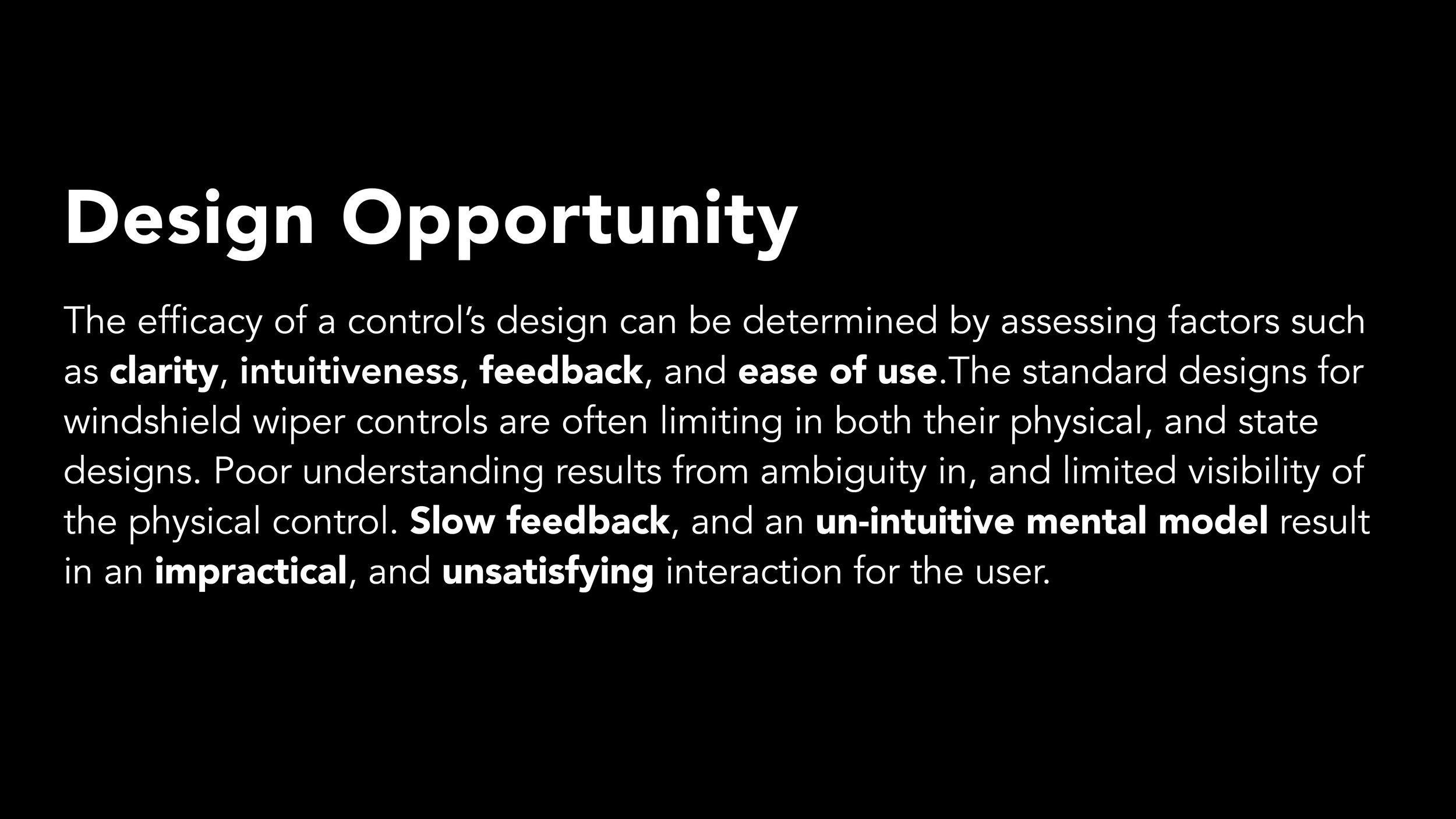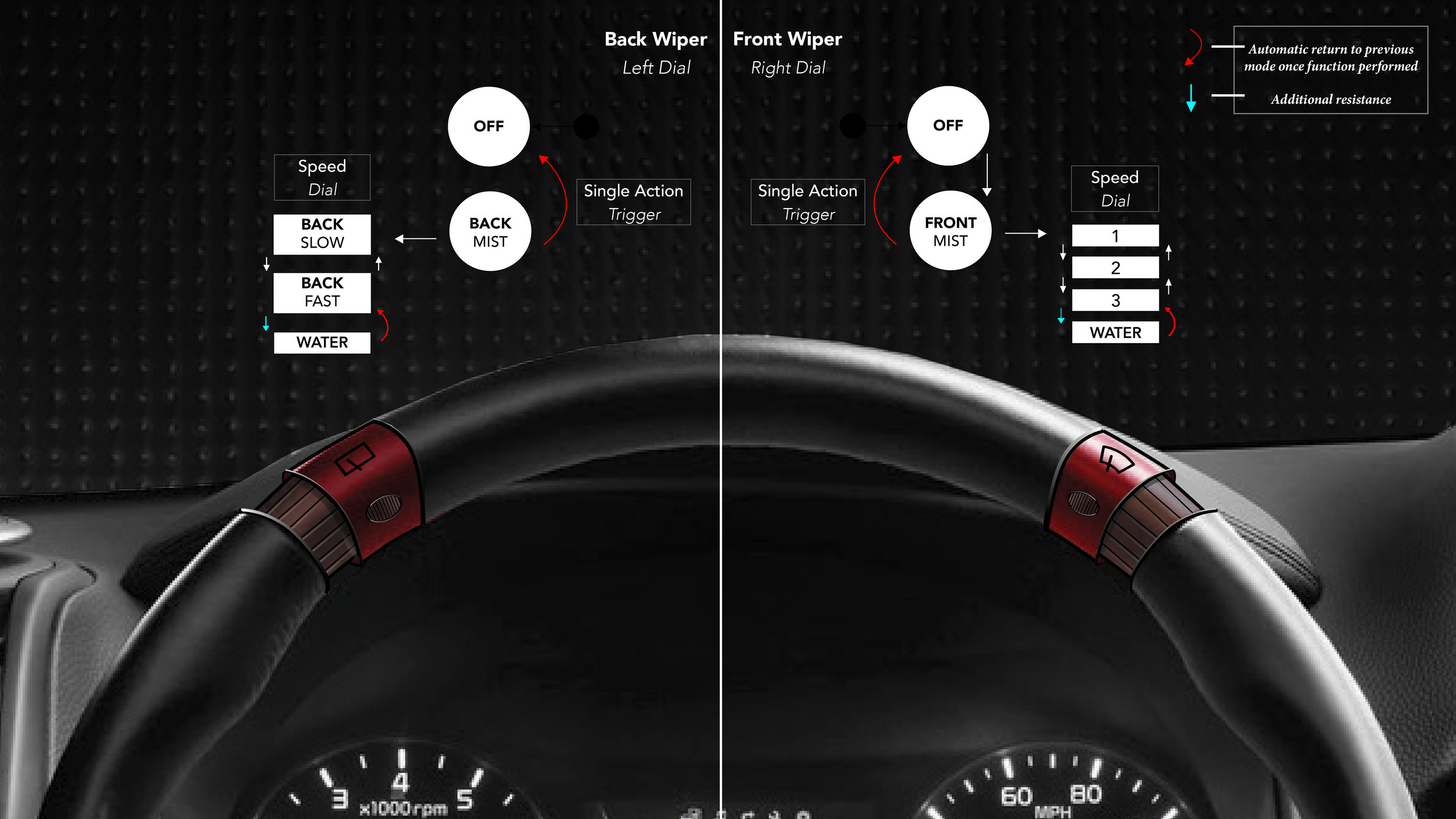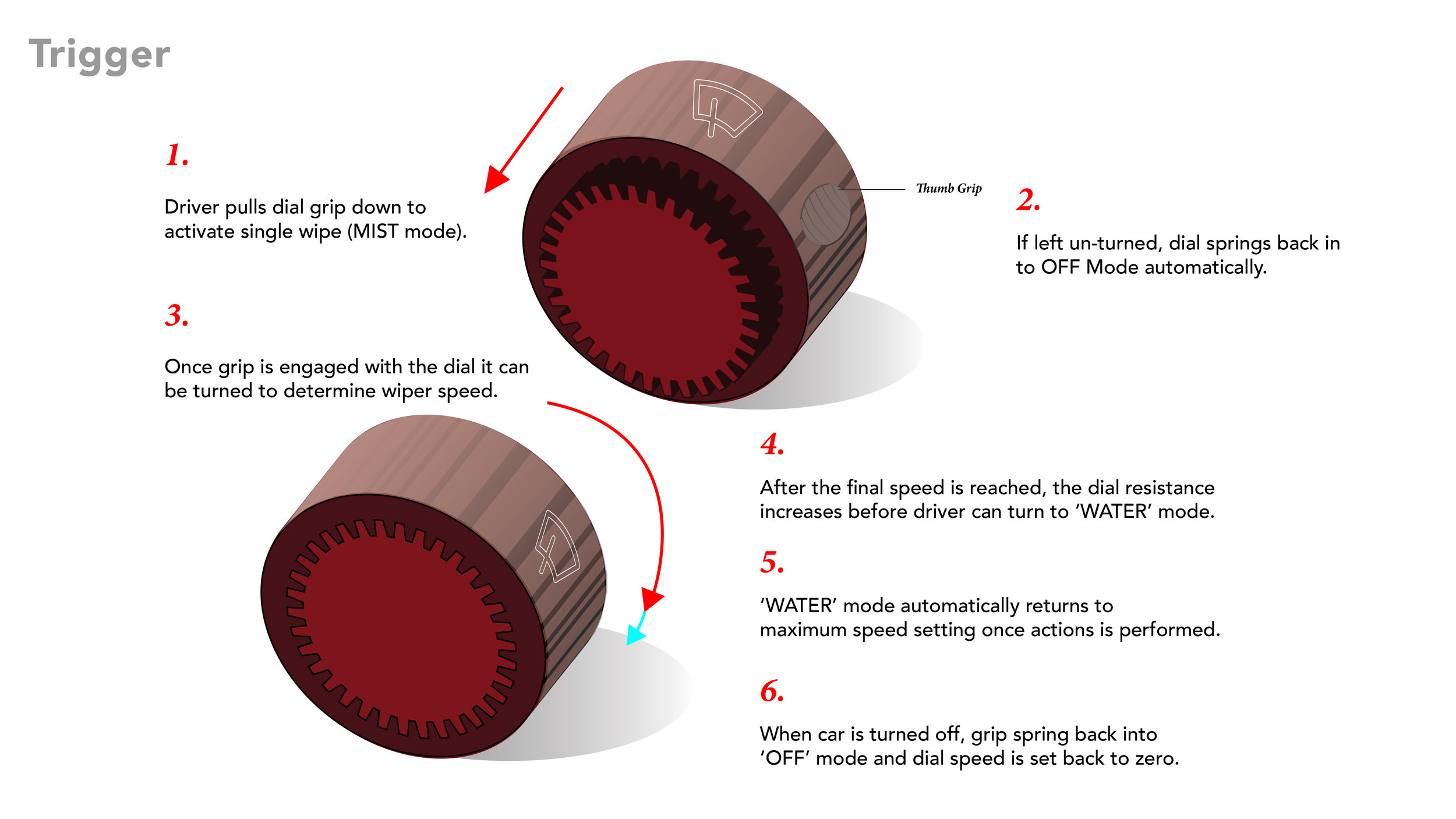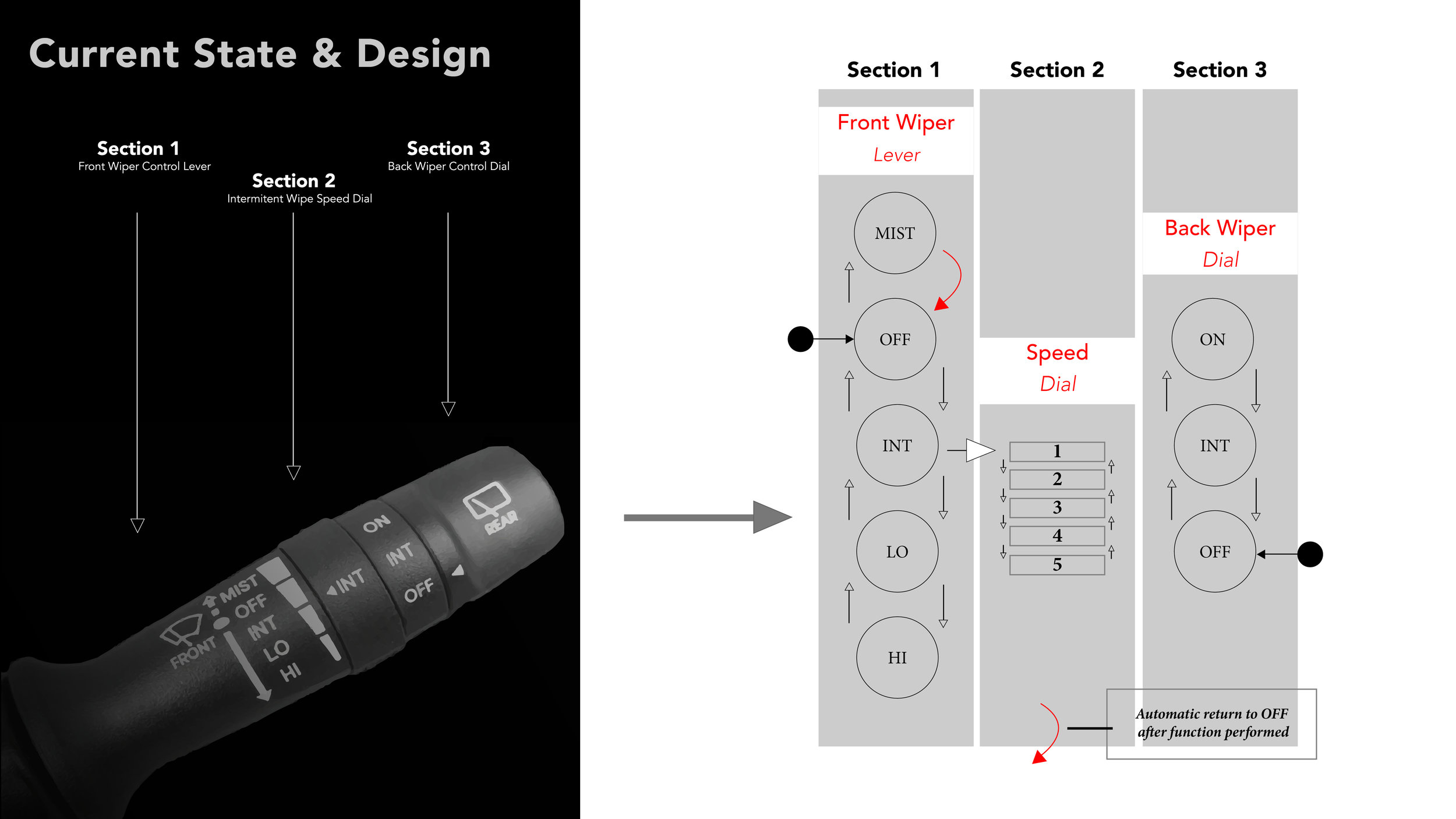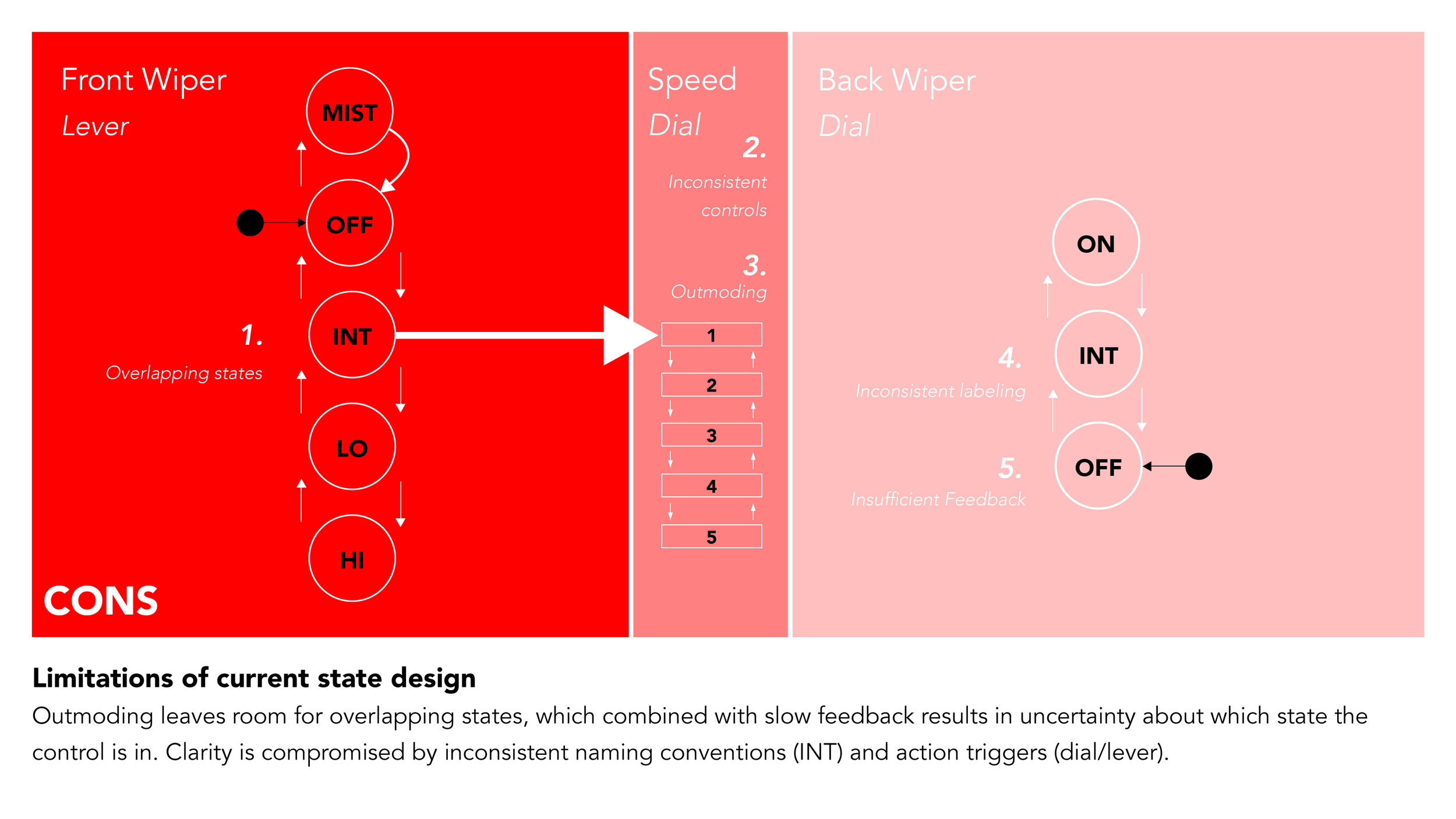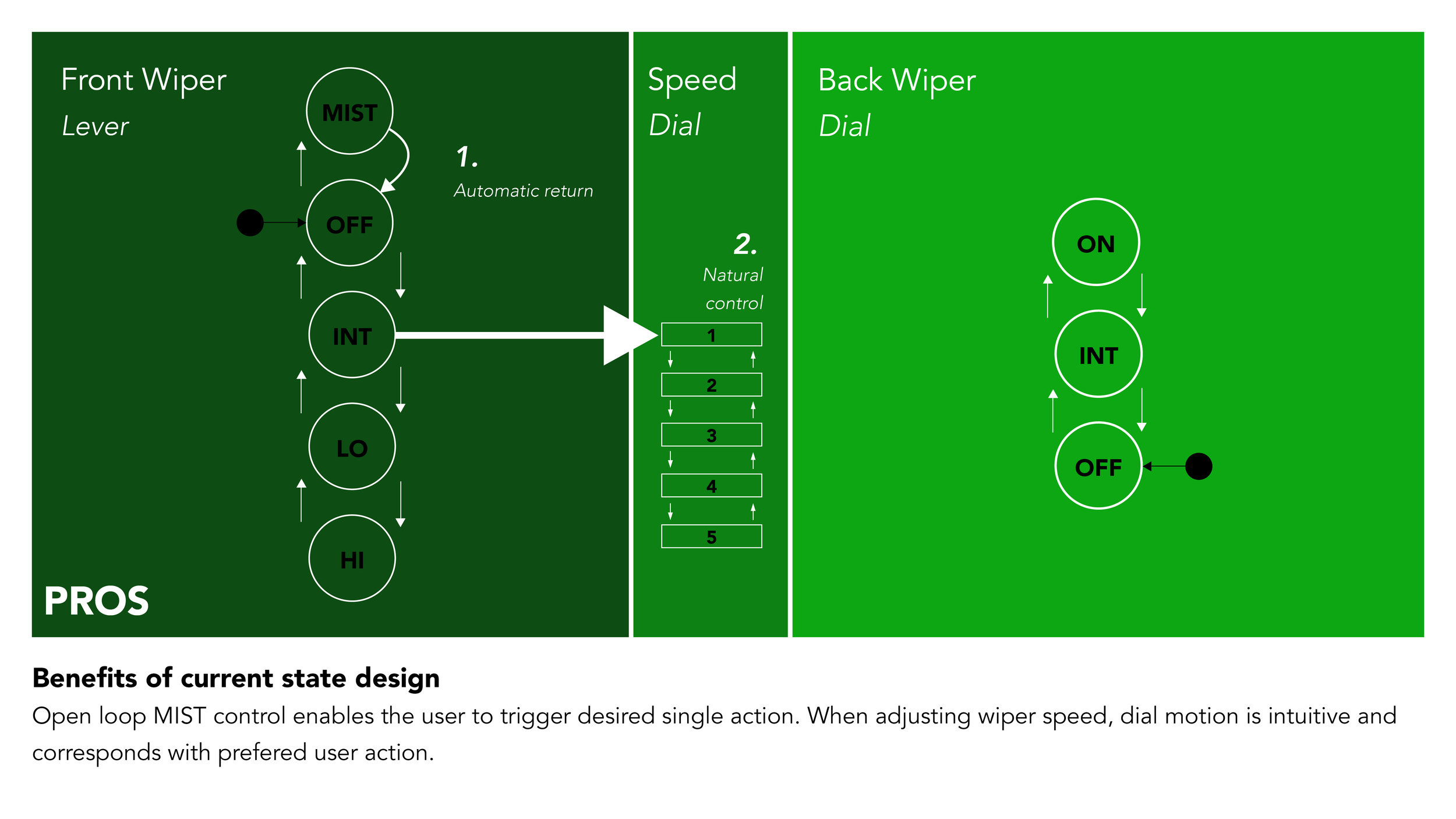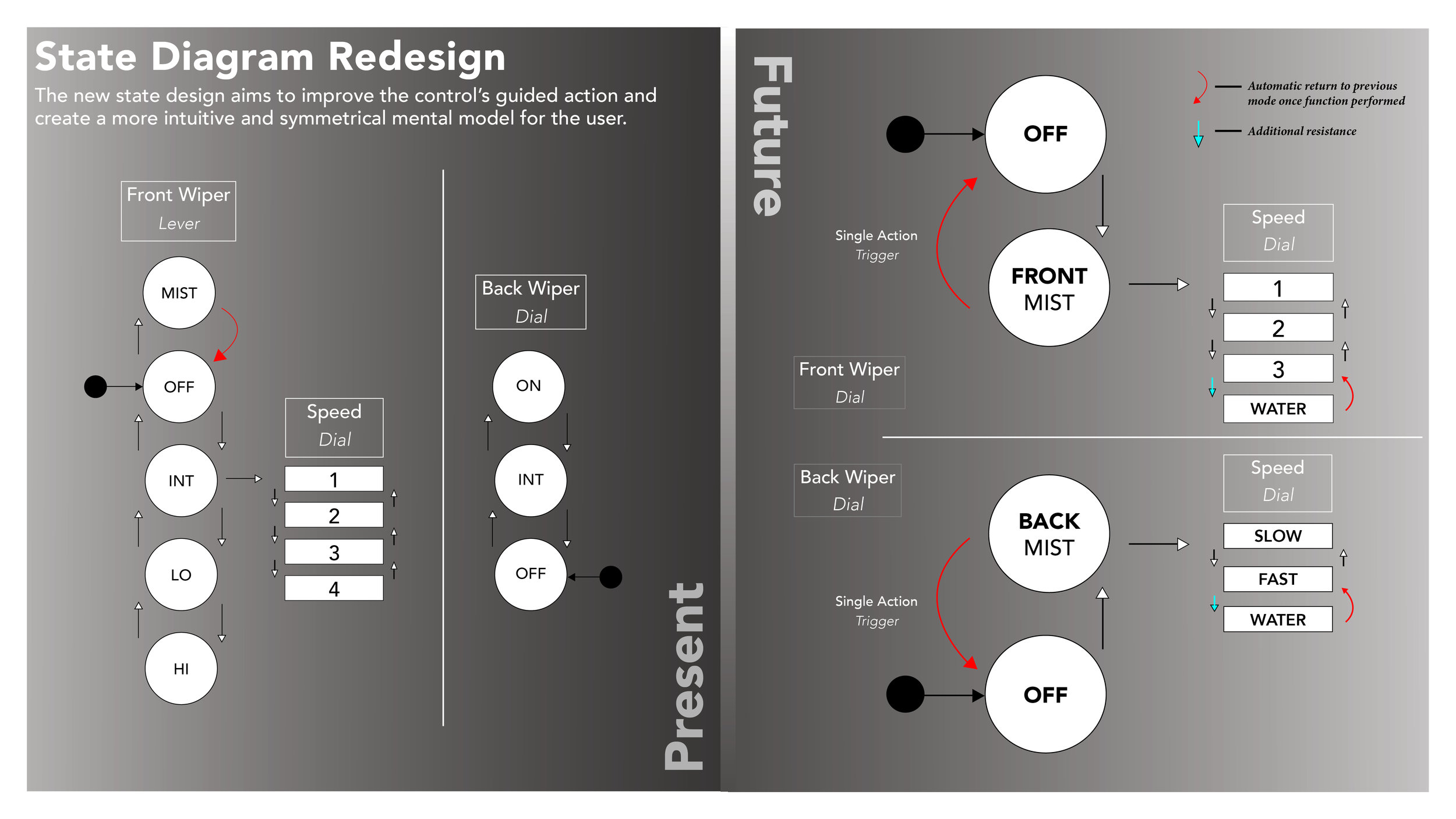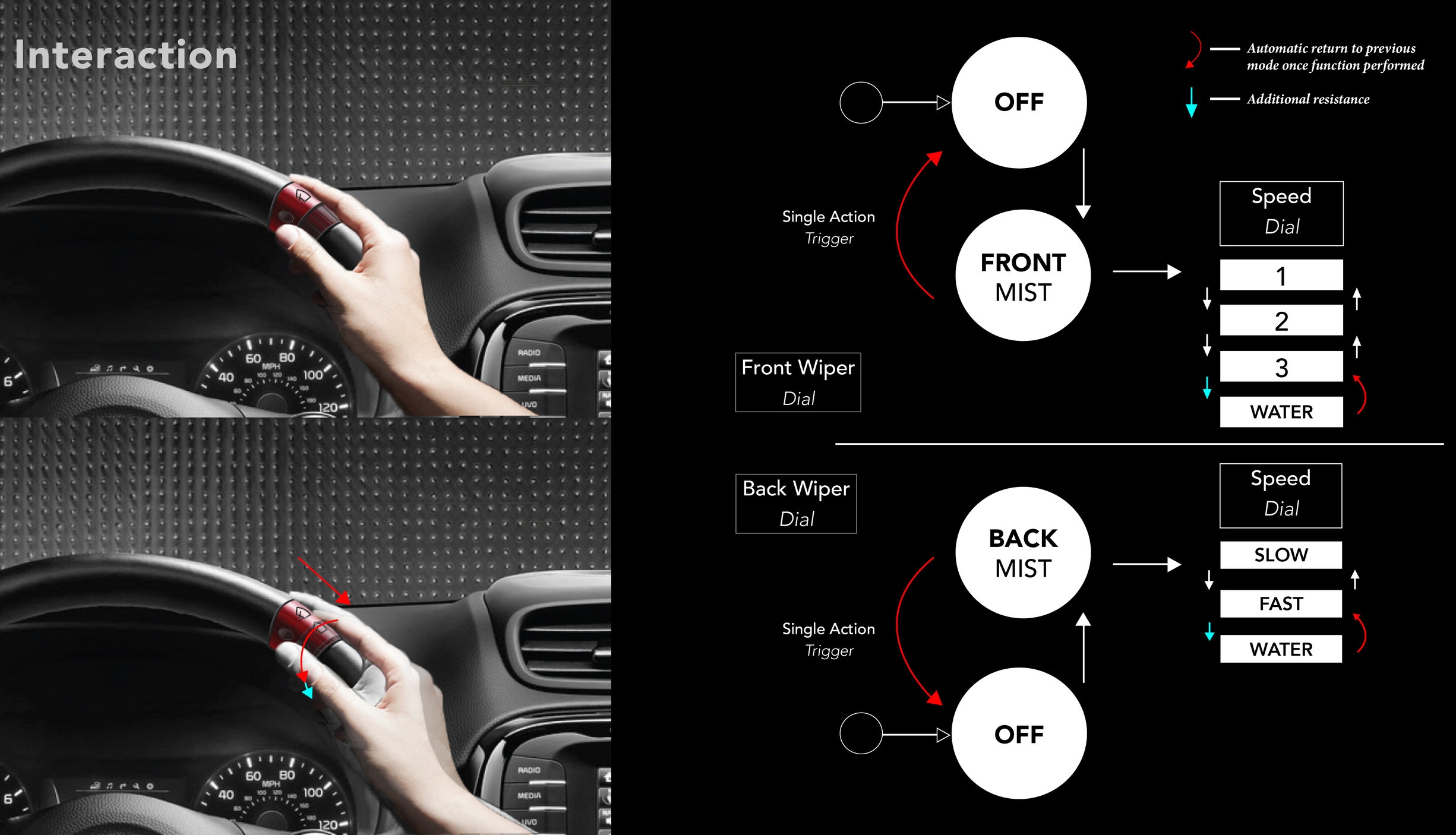Control Design
Featured on Yanko Design
Context
Windshield wiper control redesign.
A car is a context in which activity is determined entirely by human - computer interaction. As technology progresses, existing controls can and should be refined, or even redefined. There is an opportunity for design in any observed instance of mistake, confusion, or discomfort. In the case of the car’s driver, a mistake or lack of understanding in the function of a control can be disastrous. To design responsibly, vehicle controls need to be placed, designed, and communicated with great care and practicality.
Problem
In the case of the windshield-wiper control, all functions related to the windshield wiper have traditionally been isolated and confined to a single control with multiple, overlapping states. Although each state is labeled, the physical distance of the control from the driver does not provide for instantaneous clarity while driving. The overlap and inconsistency of the triggers paired with an excess of modes for which there exists only non-specific feedback opens up many opportunities for improvement.
Solution
A restructuring of the control's modes and physical design. Identifying issues by generating state diagrams based on the existing controls, and reverse-engineering the mental models the original designers intended for the users.

